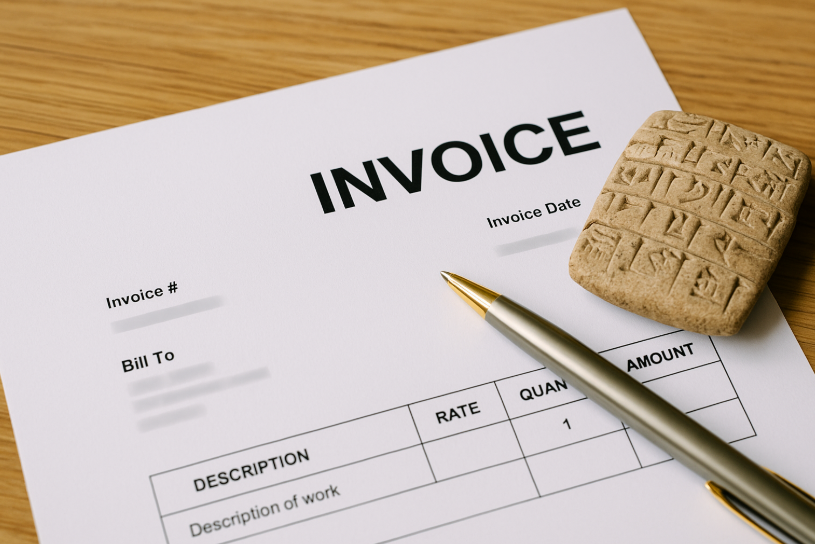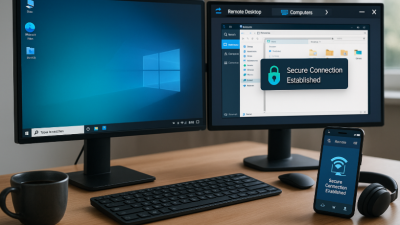Let’s be real — when most people hear “invoice,” their brain checks out. It sounds boring, corporate, and way too adult. But here’s the thing: invoices are the unsung heroes of getting paid. Without them, your awesome work just becomes a friendly favor. And unless you’re working for hugs (no judgment), that’s not exactly ideal.
Interestingly, invoicing has been around for thousands of years — seriously. Archaeologists have found clay tablets from ancient Mesopotamia listing items and payments. Basically, humans have always wanted receipts to make sure Bob the Farmer paid for his goats. So don’t think of invoices as soulless documents — they’re proof of value, and sometimes, your only line of defense when clients suddenly get “amnesia.”
What’s the Difference Between an Invoice, a Bill, and a Receipt?
Let’s sort out this invoice jungle, because yeah, it gets confusing. A bill is what you get when you’re expected to pay immediately — like at a restaurant. A receipt is what you receive after you’ve paid. And an invoice? That’s somewhere in the middle: a formal way of saying “Hey, you owe me money — here’s the what, why, and how much.”

Invoices usually come with payment terms, due dates, and a breakdown of services. It’s not just a number on a page — it’s your financial paper trail. Clients take you more seriously when you invoice like a pro. Plus, it makes tax season slightly less hellish.
The Must-Haves of a Killer Invoice
You can’t just scribble “$200 for stuff” on a napkin and call it a day. A legit invoice has structure. Think of it like a mini-contract between you and whoever’s paying you. It should be clean, detailed, and impossible to misinterpret.
Here’s what every solid invoice needs:
- Unique Invoice Number – Helps you track and reference payments (and makes you look organized).
- Your Business Info – Name, contact details, maybe even your logo if you’re feeling fancy.
- Client’s Info – So they can’t pretend they didn’t know it was for them.
- List of Services or Products – Be specific. “Design work” is vague. “Landing page redesign” is clear.
- Rates and Totals – Show your math. People love seeing where their money’s going.
- Payment Terms – Due dates, late fees, preferred methods (PayPal, bank transfer, carrier pigeon, etc.)
You could also add a friendly message at the bottom — “Thanks for your business!” goes a long way, even if they’re a nightmare client.
The Best Free Invoice Templates That Won’t Make You Look Broke
You don’t need to spend a dime to make your invoices look sleek and professional. The internet is packed with templates that are both functional and not eye-searingly ugly. Whether you’re using Google Docs, Word, or something fancier like Notion, there’s a template for you.
Here are some favorites worth bookmarking:
- Google Docs & Sheets – Great if you love clean layouts and cloud access. Plus, they’re easy to share.
- Canva – Not just for Instagram stories. Their templates let you add branding and look like a creative genius.
- Wave – Free invoicing software with templates and basic automation. Also tracks payments.
- PayPal – Built-in invoicing tool, great for freelancers. Bonus: clients can pay you in a click.
Some platforms also let you save templates and re-use them, which is perfect if you send multiple invoices per week and hate doing repetitive work.
Invoice Terms That Won’t Make You Sound Like a Robot
| Term | Meaning | Why It Matters |
|---|---|---|
| Net 30 / Net 15 / Net 60 | Client has 30, 15, or 60 days to pay; “net” means “you’ve got X days.” | Sets clear payment timelines and avoids confusion. |
| Due Upon Receipt | Payment is expected immediately after receiving the invoice. | Helps speed up cash flow. |
| Late Fee | Penalty for overdue payments; can be a flat fee or percentage. | Encourages clients to pay on time. |
| PO Number | Purchase order number, often used by larger companies for tracking. | Ensures your invoice matches their internal records. |
| Line Items | Each product or service listed separately. | Improves clarity and reduces client questions. |
Top Tools That Make Invoicing Almost Enjoyable (Almost)
Okay, “enjoyable” is a stretch. But these platforms make creating and managing invoices way less painful — and a whole lot faster.

Here are a few that get the job done:
- QuickBooks – The heavyweight champ of accounting software. Great for recurring invoices, tracking, and even taxes.
- FreshBooks – Super user-friendly and ideal for freelancers and small teams. It automates follow-ups too.
- Zoho Invoice – Packed with features and surprisingly generous for a free plan.
- Bonsai – Tailored for creatives and freelancers. Handles contracts and time tracking too.
- Invoice Ninja – Open source, customizable, and loved by developers.
Before choosing one, think about what you really need. Just sending one invoice a month? Google Docs might be enough. Managing five clients with retainer fees and taxes? You’ll want something more robust.
Common Invoicing Mistakes That Make You Look Like an Amateur
Even the smartest people mess up invoices. And no, it’s not always about math. Sometimes it’s the little things — like forgetting to add your payment info (facepalm), or leaving the due date blank and wondering why you’re still broke in two weeks.
Let’s save you from rookie mistakes. Here’s what to avoid:
- No Due Date – If you don’t set a deadline, clients won’t set a priority.
- Unclear Descriptions – Vague items confuse clients and lead to delays.
- Missing Contact Info – How will they send you the cash?
- Mixing Personal and Business Accounts – Don’t let your rent money depend on client punctuality.
- Forgetting Tax Details – If you’re required to charge tax, make it crystal clear.
Getting these right might not feel exciting, but it’ll save you major headaches later. And who doesn’t want faster payments and fewer awkward email chains?
Pro Tips to Get Paid Faster (Without Being Annoying)
Let’s be honest, chasing down payments sucks. But there are clever ways to nudge clients without sounding desperate or turning into a debt collector.
Try these strategies:
- Send invoices promptly – Don’t wait a week after the project’s done. Strike while your work is still fresh in their minds.
- Set friendly reminders – A quick “Hey! Just checking in on the invoice” works wonders, especially when it’s automated.
- Offer multiple payment options – Some people love PayPal, others prefer wire transfers. Make it easy.
- Add late fees (nicely) – You’re not being rude, you’re setting expectations.
- Build trust – If you’re consistently delivering awesome work, clients will want to keep the relationship healthy (and paid up).
You can even use psychology — a well-designed invoice with your branding feels more “official” and less ignorable than a plain-text email with an attachment called “invoice_final_REAL_v3.pdf.”



